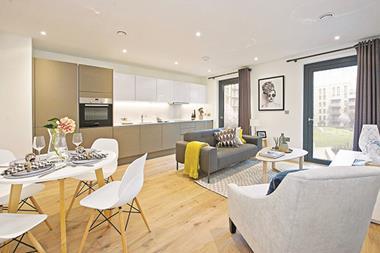How should the build-to-rent (BTR) sector respond to the cost-of-living crisis, and how will it shape future development?

On one hand, mortgage interest rate rises, among other factors, are pushing up demand for rental homes, which is fuelling rent inflation. But on the other hand, there is inflation and rising energy costs for residents as well as for those developing and operating BTR properties.
It is not a time for the BTR sector to be complacent. BTR rents have grown, which is great for investor returns, but it brings an element of affordability risk for renters, particularly with bills going up at the same time.
There is an increased risk of arrears and retaining tenants may be more difficult. Then there is the management of operating costs; for example, salaries and insurance costs are rising faster than inflation. Rents have been growing to keep up, but how much longer can that last?
At some point, the cost of running a scheme could be increasing at a faster rate than rents are. And that isn’t good for investors’ net income.
Managing operational costs effectively is key, and technology can help. Residents can be encouraged to do certain things online so onsite staff can focus on the value-add services that enhance residents’ living experiences. In addition, staffing structures can be adjusted to mirror when residents most need assistance. Technology and data can be used to design out some operational costs.
Pushing up rents might be tempting, but it can be a fool’s game if it becomes harder to let space or resident churn increases, as this in turn pushes up marketing costs. Thinking longer term and being responsive to what is happening in the market is better in the long run.
BTR is generally in the top quartile of rental values, but there are savings that could make it a more attractive proposition when budgets are stretched. For renters, a new BTR property’s energy efficiency may look like a better choice compared with flats in older buildings, which are costly to heat.
The next couple of years will be a balancing act for the sector between delivering for investors and delivering for residents, but it could prove beneficial for both in the long term.
Alongside reduced energy costs, there are added benefits that can help keep overall living costs down, such as wifi being included in the rent and having onsite access to a gym and communal lounge.
These savings could be real selling points when incomes are tight but are benefits the industry doesn’t promote enough. While the cost-of-living crisis will inevitably ease at some point, this challenging period will shape the market going forward.
Historically, smart technology has been value-engineered out of developments, but with the pressure to deliver on energy efficiency coupled with pressure from investors to deliver on ESG credentials, it is becoming less of a luxury.
Technology also goes hand in hand with collecting and monitoring data, which means the next buildings can be designed to operate more efficiently and effectively.
Affordability issues may also lead to a greater variety of offer and choice for people. There will be more mid-market BTR products with fewer amenities to keep down operational costs and rents.
Depending on planners, there could be more shared homes – co-living, similar to student housing – as they are more affordable. Similarly, there could be smaller homes in buildings with more amenity space to compensate.
The next couple of years will be a balancing act for the sector between delivering for investors and delivering for residents, but it could prove beneficial for both in the long term.
Debra Yudolph is a partner at SAY Property Consulting





























No comments yet